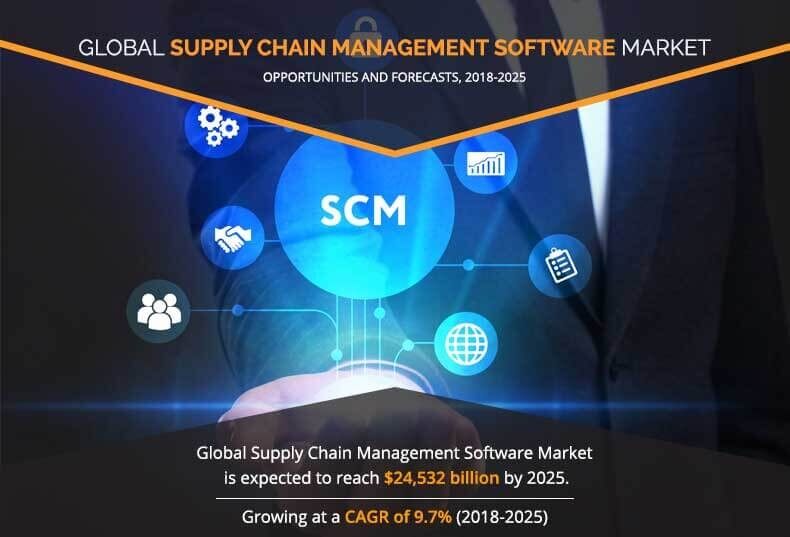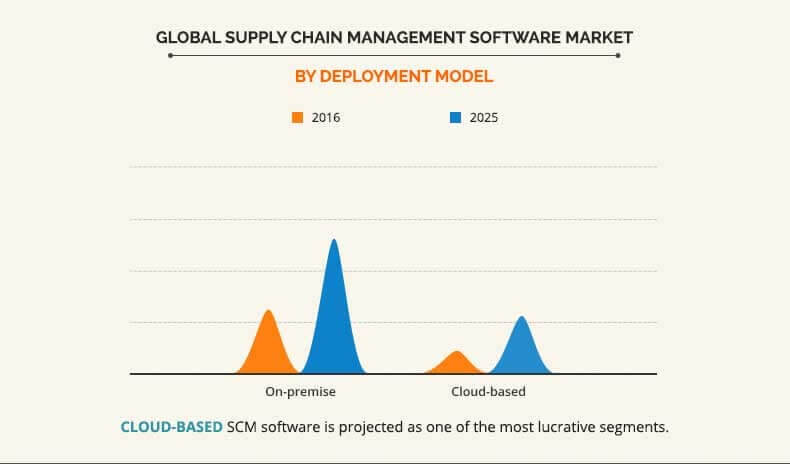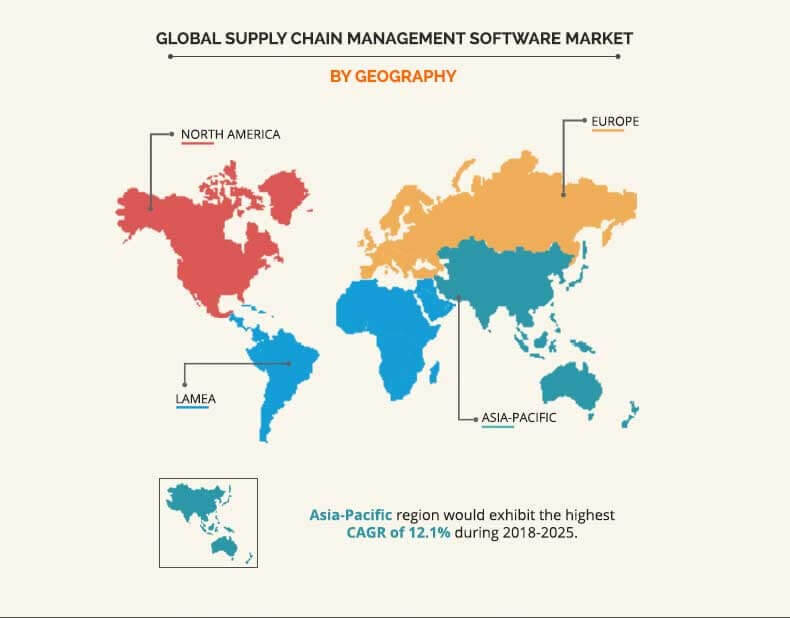Supply Chain Management Software Market Overview:
Supply Chain Management Software provides a real-time analytical platform, which manages the flow of product and information across the supply chain network. This software is primarily designed to enhance and strengthen the supply chain operations in an organization. Moreover, it supervises the production, inventory, sourcing, and transportation, as well as manages the product demand. The SCM software can be customized based on the enterprise requirements. This software provides better visibility to organizations with a cross-functional access, and also provides exception-based process management platforms, which enable staff to micro-manage steady-state processes. The global supply chain management software market was valued at $10,850 million in 2016, and is projected to reach at $24,532 million by 2025, growing at a CAGR of 9.7% from 2018 to 2025.
View full report: https://www.futureindustryinsight.com/product/supply-chain-management-software-market/

Get more information on this report : Request Sample Pages
Factors such as rise in need for comprehensive software to manage the complex supply chain network; increase in demand for cloud-based supply chain management software; and incorporation of new digital technologies such as Internet of Things (IoT), machine learning, and others drive the growth of the global market. In addition, surge in demand for transportation management systems (TMS) software and growth in trend of Internet of Things (IoT) are expected to present major opportunities for market expansion in the near future.
The on-premise SCM software segment led the market in 2016, and is expected to continue to remain dominant in the near future. However, cloud-based SCM software is expected to witness highest growth rate, due to rise in adoption of cloud-based SCM software in small- & medium-sized enterprises.

Get more information on this report : Request Sample Pages
The supply chain planning segment dominated the overall market in 2016, and is expected to continue this trend in the near future, owing to rise in adoption of supply chain planning software, especially for demand planning, inventory planning, and asset planning.

Get more information on this report : Request Sample Pages
North America dominated the overall market in 2016, due to the presence of large transportation industry. However, Asia-Pacific is expected to witness the highest growth rate during the forecasted period.

Get more information on this report : Request Sample Pages
The report focuses on the growth prospects and restraints of the market based on the analysis of regional trends. The study provides Porters Five Forces analysis of the industry to understand the impact of various factors such as bargaining power of suppliers, competitive intensity of competitors, threat of new entrants, threat of substitutes, and bargaining power of buyers on the growth of the market.
Segment Review
The global supply chain management software market is segmented into deployment model, user type, industry vertical, product, and region. Based on deployment model, the market is bifurcated into on-premise and cloud-based. On the basis of user type, it is categorized into small & medium sized enterprises (SMEs) and large enterprises. By industry vertical, it is divided into consumer goods, healthcare & pharmaceuticals, retail, manufacturing, food & beverages, transportation & logistics, and others. Depending on product, it is fragmented into transportation management system, warehouse management system, supply chain planning, procurement software, and manufacturing execution system. Region wise, it is analyzed across North America, Europe, Asia-Pacific, and LAMEA.
The key players operating in the global supply chain management software market include SAP, Oracle Corporation, JDA Software Group, Inc., Infor, Manhattan Associates, Epicor Software Corporation, The Descartes Systems Group Inc., HighJump, Kinaxis Inc., and IBM Corporation
Top Impacting Factors
Advancements in industrial-grade digital technology, increase in inclination towards cloud-based supply chain management software, and rise in need for improved supply chain visibility act as the major drivers of the market. However, lack of IT infrastructure in the underdeveloped nations and increase in security & privacy concerns are expected to hamper the market growth during the forecast period.
Advancements in Industrial-grade Digital Technology
Organizations across the world have focused on improving efficiency and reducing maintenance of the manufacturing and material handling solutions through effective integration of data collected from connected devices and networking equipment for enhanced real-time material movement across the supply chain. Companies in various sectors are investing heavily to digitalize their business models and their supply chain management (SCM). For instance, Automaker BMW is working on achieving a fully digitalized factory and on data analytics driven supply chain segmentation for inbound parts.
Increase in Inclination towards Cloud-based Supply Chain Management Software
The cloud-based deployment model does not involve capital cost, and is low on maintenance requirements, and hence is most preferred by various enterprises, including SMEs and large enterprises. Rise in need for infrastructure management system and shifting of workload to a cloud model drive the adoption of cloud-based SCM software. Direct IT control, real-time supply chain tracking, faster data processing, and cost-effectiveness of cloud deployment are few factors that are further anticipated to elevate the market growth.
Surge in Need for Improved Supply Chain Visibility
Supply chain visibility allows businesses to monitor exactly where their current processes are underperforming. In addition, it generates reliable, data-driven insights, which can be used to make improvements in business operations. Increase in need to improve supply chain visibility and the desire for better transparency of orders, inventory, and shipment information have propelled the growth of the market.
Key Benefits
- This study includes the analytical depiction of the global supply chain management software market along with current trends and future estimations to determine the imminent investment pockets.
- The report presents information related to key drivers, restraints, and opportunities.
- The current market is quantitatively analyzed from 2016 to 2023 to highlight the financial competency of the industry.
- Porters Five Forces analysis illustrates the potency of buyers & suppliers in the global supply chain management software industry…
View full report: https://www.futureindustryinsight.com/product/supply-chain-management-software-market/
About Us:
FutureIndustryInsight™ provides quantified B2B research on 20,000 high growth emerging opportunities/threats which will impact 75% to 85% of worldwide companies’ revenues. Currently servicing 5000 customers worldwide including 80% of global Fortune 1000 companies as clients. Almost 70,000 top officers across eight industries worldwide approach FutureIndustryInsight™ for their painpoints around revenues decisions.
Media Contact:
Name: Rahul
Designation: Global Sales Manager
Ph: +17132421323
